Invisible Dogs was really written by my daughter, Ida. I tried to change her name in the story but Ida insisted that it was her story so the main character had to have her name.
One day on the walk to school, real-life Ida invented these invisible dogs. I could see her holding invisible leads so I asked her about them. As she talked I reached for my phone and started recording our conversation. The words she used were so perfect that many of them ended up in the book.
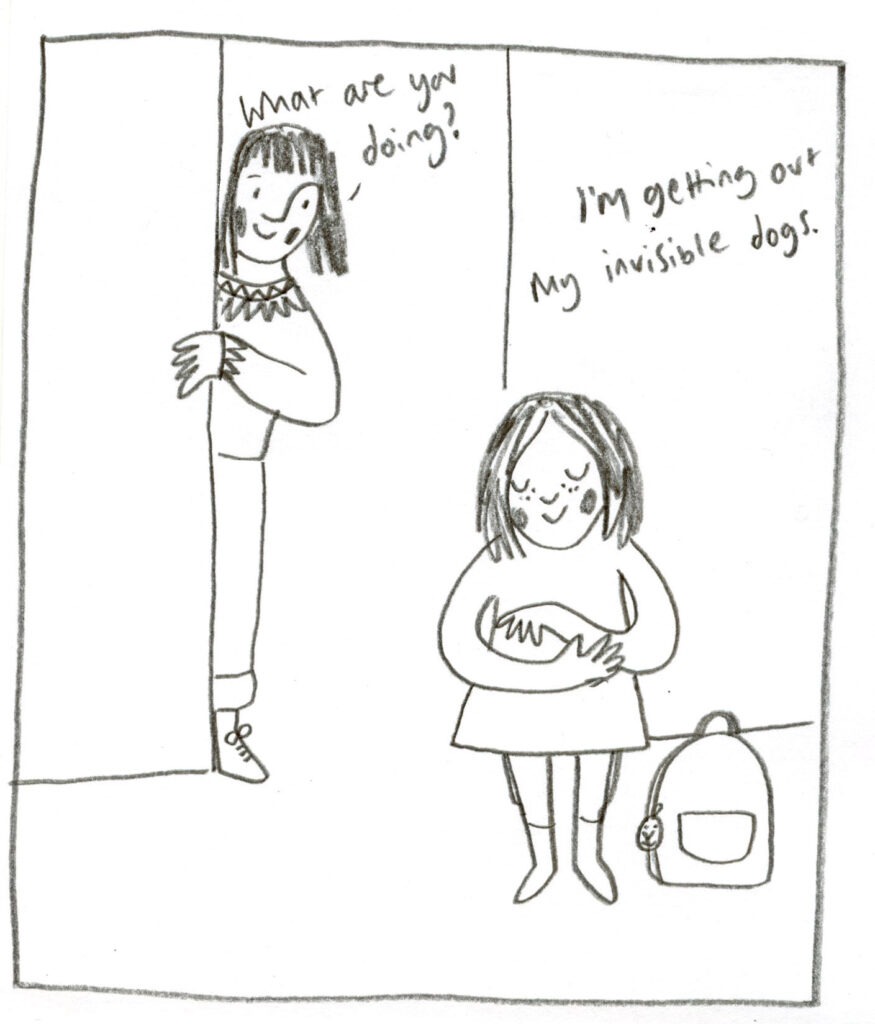

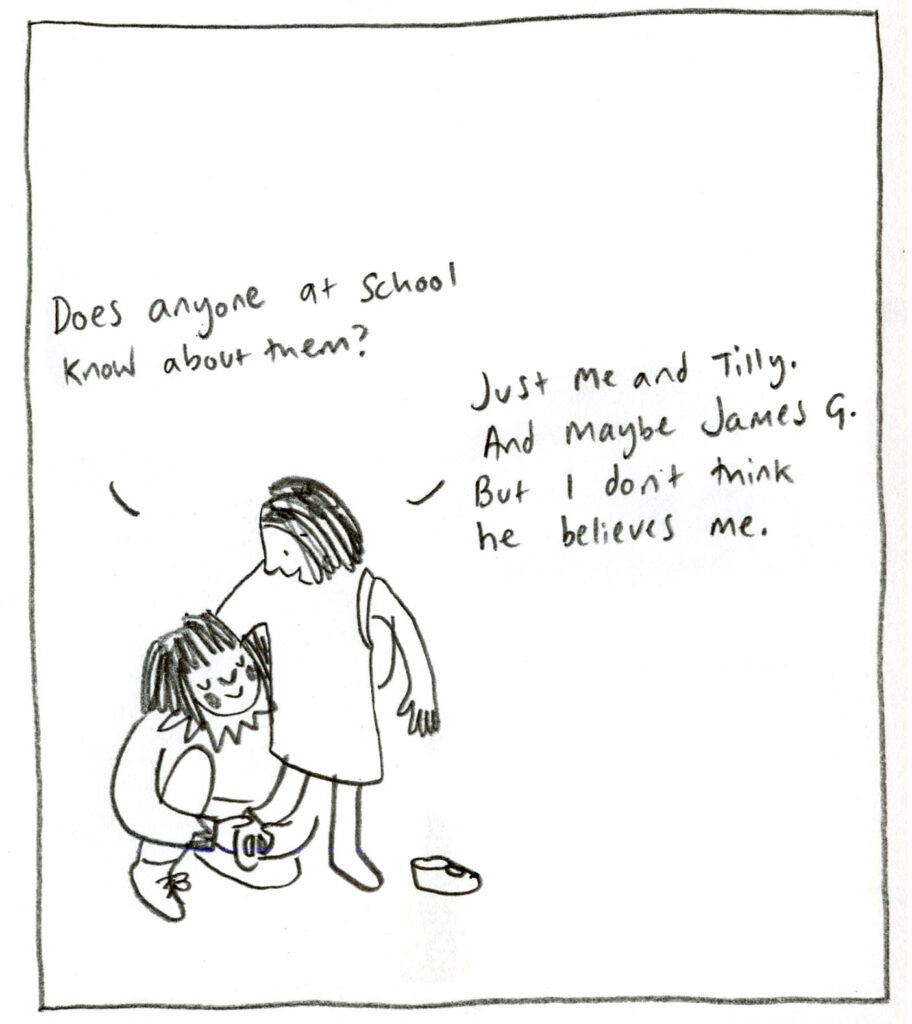
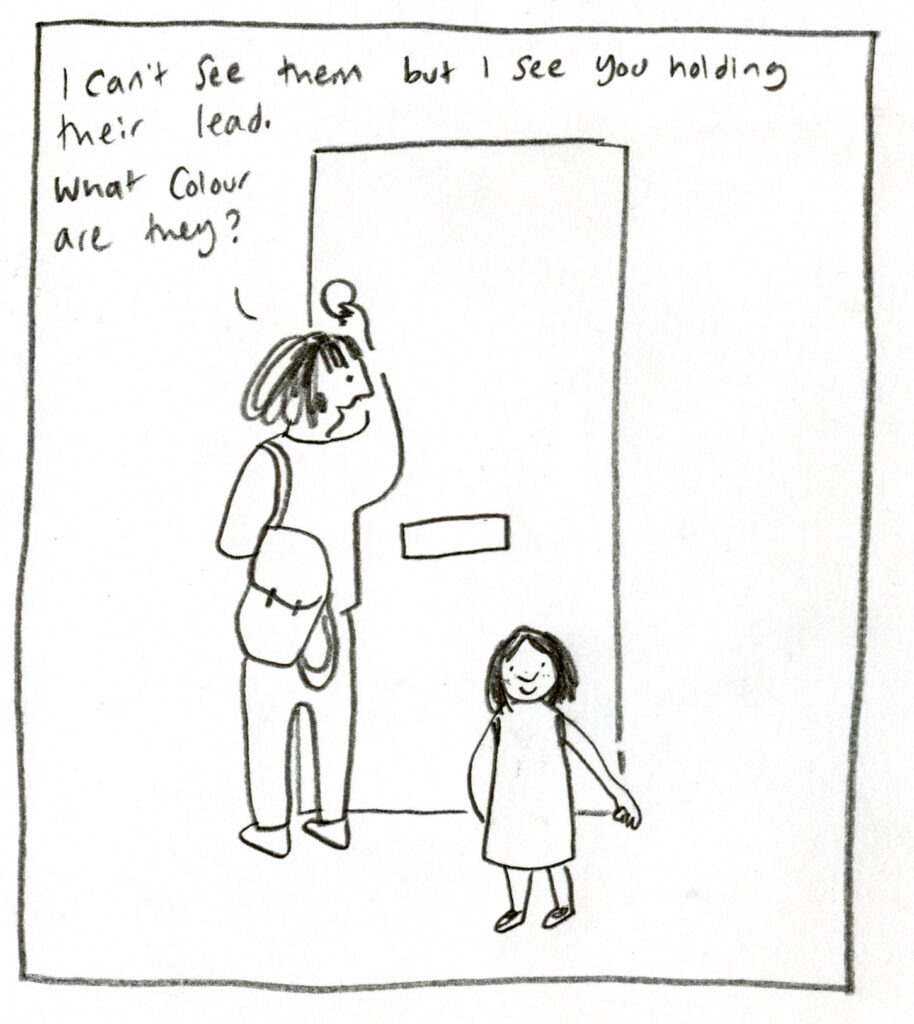

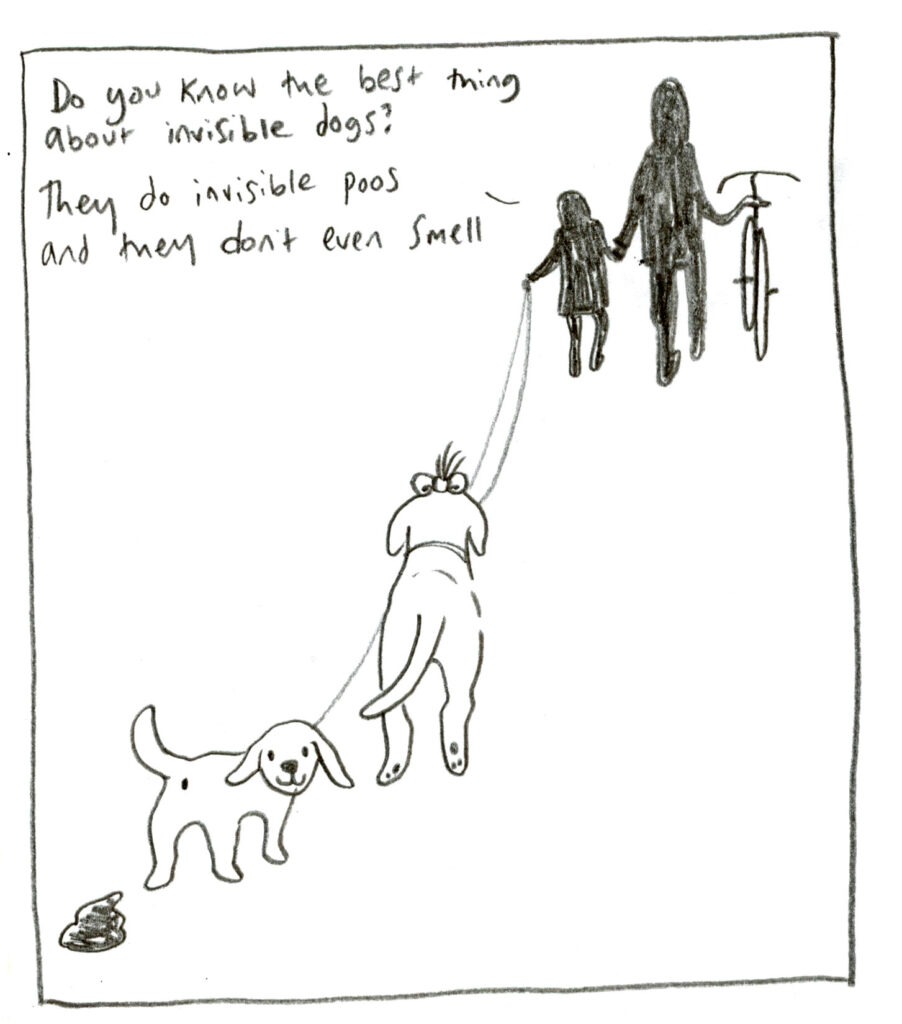
After I dropped Ida and her dogs off at school that morning I drew a quick sequence and sent it to my editor Libby, suggesting it could be a story. Because Libby is a brilliant editor, she wanted me to inject it with meaning. Then, because life often imitates art, real-life Ida started not wanting to go to school. My partner and I got an understanding of how hard it is to try and help a child through this which then became the heart of the story. I also drew on my own childhood experience of my parents splitting up, and my ambivalence towards school. In this story, as in my daughter’s case, Ida’s school is lovely and the children and teachers are kind – she’s just having a hard time dealing with her own emotions. She needs someone to help her find her own way to cope with her feelings. And in this story that someone is Grandpa.
Grandpa is based on my own motorbike-riding Dad, who is a very kind grandpa. I had a lot of fun including in the illustrations some of my dad’s toys that he has kept from his own childhood.

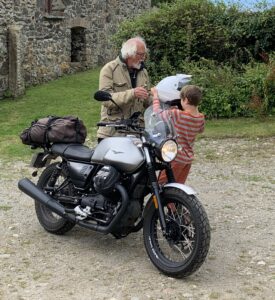
I set the whole story in our neighbourhood in London. Sketching from life is really important to me and has informed my work, and what I love is that when you draw from life a lot you end up with a database of people and places and so when you’re looking for something or someone to put in an illustration you often find you’ve already drawn it.


One of the biggest challenges I faced with this book was how to illustrate an invisible dog. The point about invisible dogs is that adults can’t see them (apart from Grandpa of course). At first I thought they should be transparent…
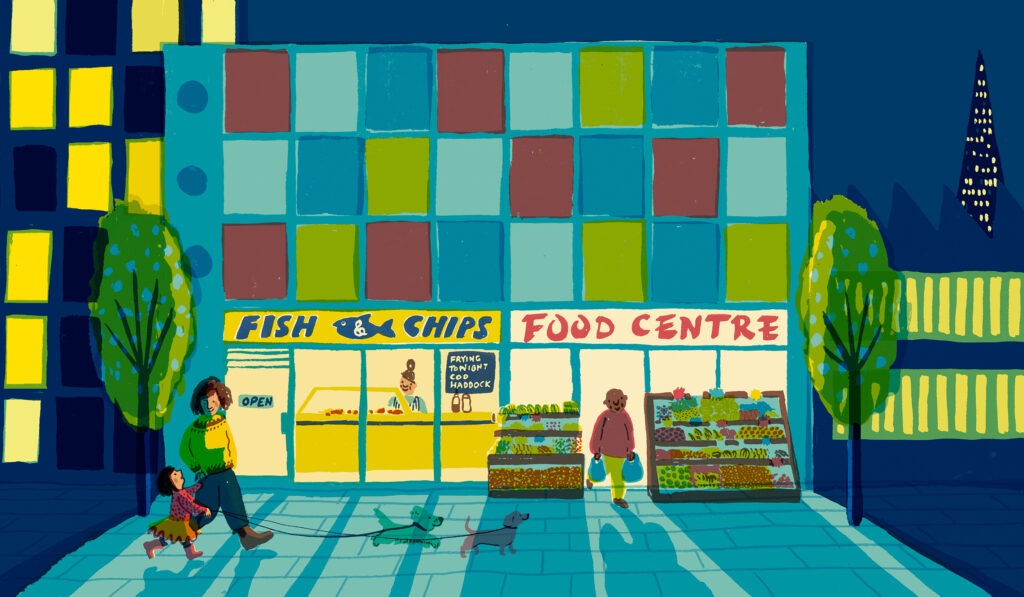
But this was a problem because depending on the background sometimes they are too hard to read, and sometimes they seem too visible.
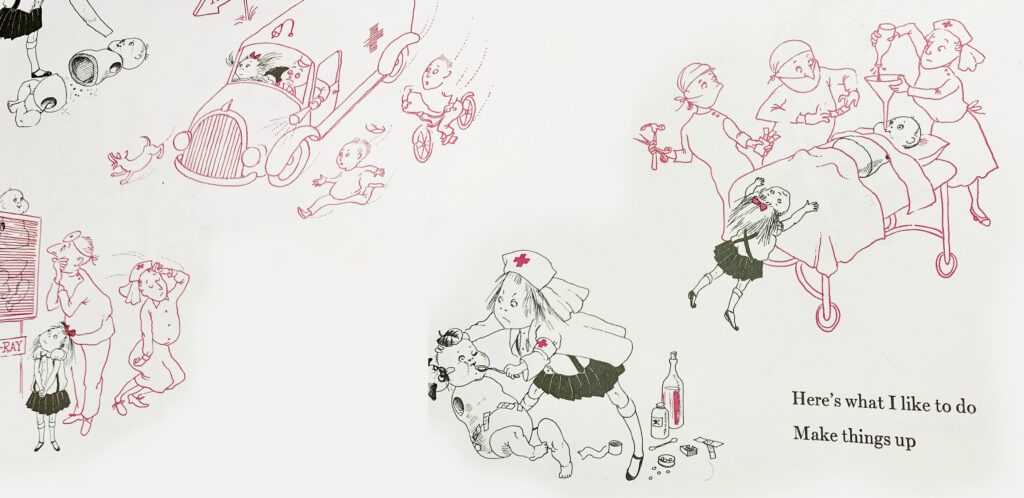
And I kept thinking about Eloise, written by Kay Thompson and illustrated by Hilary Knight, which my Dad read as a child and handed down to me and which I adored. Eloise has a vivid imagination and her imaginary world is illustrated with just a red line, and so I thought perhaps I could use the same device. In fact I suggested to Libby that maybe it could be a fluorescent pink (which has to be printed as an extra colour and is more expensive) and to my delight Libby agreed. So there we have it. High Vis invisible dogs!
I loved making this book so much, it’s full of details for children to spot, and if you look closely you might just see an old friend or two.




